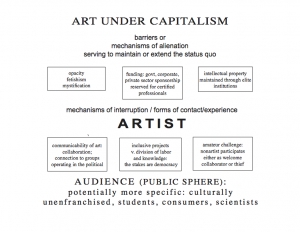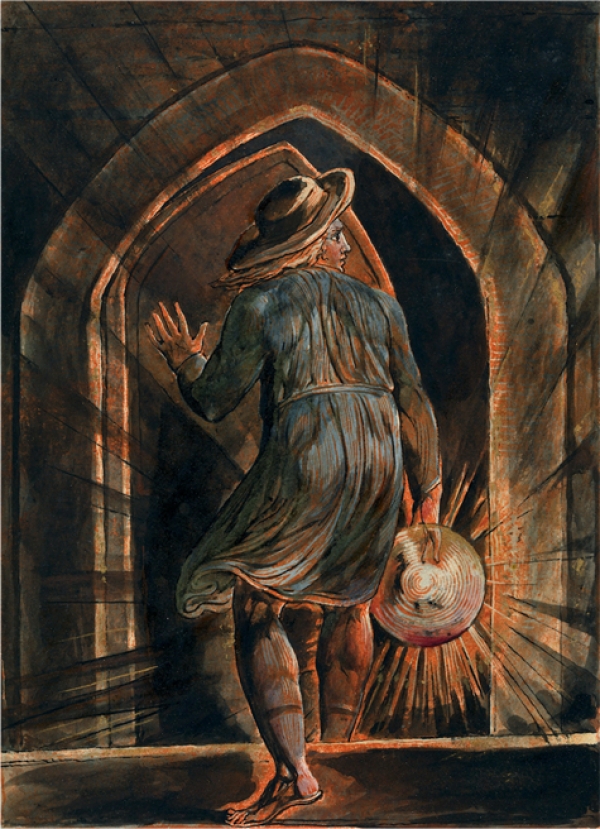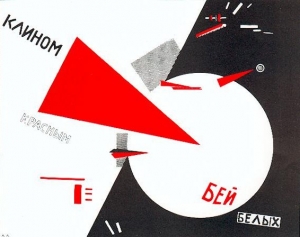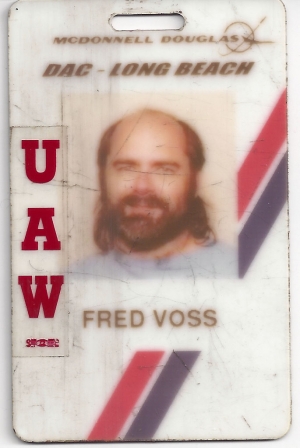
For the many, not the few: Liars of Earth at the Northern Gallery of Contemporary Art
Mike Quille reviews the national premiere of Liars of Earth, and interviews the artist.
Review of the Drawing
Chad McCail’s 100-foot long drawing depicts a series of stories from an imagined world in which the many have combined to overthrow the few. The liars are levelled, and the rich and powerful are overthrown and rehabilitated.
In the drawing, class struggle is presented as a parable. On one side are masked, robotic figures – oddly reminiscent of Tory politicians at election time – who have been living in stately homes, exploiting and imprisoning working people, privatising hospitals, slaughtering animals and despoiling the environment.
On the other side there are massive, mythical, avenging figures, who look like they’ve come straight out of Marvel comics. On the far left (!) they include a minotaur, destroying military tanks and aeroplanes. Moving along the drawing, we watch a huge snake devour the rich and poo them out to be re-clothed and rehabilitated. Then there’s a giant lizard which plucks apples from a willing tree that has burst out of the concrete and feeds them to children – who then turn their school into a combat vehicle and join the struggle for liberation.

The skeleton of Death subdues the military
At the right-hand end of the drawing, in front of prison walls which have been smashed, crouches Jesus, compassionately overlooking a group of liberated prisoners, chatting with their victims.
Towering over it all, in the central section of the drawing and energising the whole series of tableaux, stands the ‘man of men’. He – or it could be a she – is a human giant, a figure built of thousands of people working together to defeat the rich and the robots and build a new order.

The minotaur liberates animals from the abbatoir
It’s an updated, modern and witty version of the print accompanying Hobbes’ Leviathan, which shows how during a crisis the many, the entire body politic, has to unite and act as one. With the crucial difference that this time there is no crowned figure symbolising unity – there is just the ‘man of men’.

The print which accompanied Hobbes's Leviathan
McCail’s work builds on the techniques of comics and video games to imagine, in a playful but deeply serious way, other possible worlds where we unite to overthrow the ruling class. The moral and political lesson from this Marvel-lous work of art is clear. Only by working collectively can we defeat the rich and powerful, and build a fair and equal world where we are all free to develop as individuals and as social beings, and realise the common good – for the many, not the few.
It’s engaging, it’s imaginative, it’s topical – and it’s very, very funny.
At the NGCA, now housed at the National Glass Centre, Sunderland, 24 June - 8 October 2017.
Interview with Chad McCail
What was the inspiration for the drawing?
I worked with local residents to make a mural depicting the history of the Becontree Estate in Dagenham in 2014. I lived in London while we were making it. I hadn't lived in London for 20 years and it seemed a harder, more divided place. I learned at first hand about the city's housing and migration problems and I saw the huge disparities in wealth. When I came back to the village I live in in Lanarkshire I wanted to make something about those issues.
Can you take us through the drawing please, describing the main characters and events depicted?
My idea was to represent a city and to scale people according to their wealth and power. For the very rich the world is like a model. They pick up a factory and move it abroad. They are like giants. The people can only combat them by drawing together. In the picture they have formed themselves into great people of people, even larger than the giants.
I also wanted to suggest that when people do unite together, they discover dormant talents. They are not afraid, their confidence grows and they find hidden qualities and strengths. I think that reflected my experience of working on the mural with the people of Becontree.

The 'man of men' overthrows the rich and powerful
So I drew figures from myth who help the people to overcome the giants. Death subdues the arms manufacturer. A horned bull god frees animals from outside the abbatoir. A great snake, an ancient symbol of fertility, consumes the rich giants and shits them out reduced to normal size. The tree of knowledge bursts through the church and the biblical serpeant feeds its apples to children enabling them to adapt the school structure into a kind of animated machine/robot which helps the people. Jesus reconciles prisoners and victims.
What political ideas influence your work generally, and this work in particular?
I am interested in the work of Wilhelm Reich, a psychoanalyst who studied with Freud but who sought a mass cure for neurosis. He thought that people's difficulties stemmed from their social conditions and the anti-sexual nature of institutional Christianity. He published The Mass Psychology of Fascism in 1933 and was a deeply sensitive and instinctive thinker whose articulate analysis does not date.
He was a friend of the pioneering educationalist A.S.Neil who founded Summerhilll School. Neil's understanding of the repressive nature of mass education led him to set up a democratic school where children take responsibility for their own education and where the rules are debated and changed at a weekly meeting where everyone, from the youngest child to the headmistress, has one vote.

The snake defecates the rich, who are then re-clothed and re-educated by children who've turned their school into a combat vehicle of liberation
I am influenced by the writings of different socialist and anarchist thinkers who believe that people are perfectly capable of organising themselves. And finally, Robert L. Moore gave 4 lectures on masculine archetypes where he refines Carl Jung's ideas. He suggests we are drawn to pleasure like moths to flame. We need pleasure to release the tension that builds in us, but if we surrender utterly to its demands it will destroy us. Culture provides us with structures to approach that flame, draw the energy we need and return renewed and refreshed.
Who and what are the main influences on your artistic practice?
Most of my influences are literary. I read a lot of fiction, science fiction particularly because it's a genre that allows a writer a certain freedom to explore different possibilities, to examine the consequences of our general direction and propose alternatives and to use analogy and metaphor to get at current tendencies. Philip.K. Dick is a great writer who wrote serious fiction in a popular idiom with a lot of humour. Ursula Le Guin I love too.
What's your view of British politics these days, and in particular the Corbyn phenomenon?
Jeremy Corbyn's manifesto was good and I hope that now the party will support him. I admire his integrity and how he stands by his ideas, whether they are popular or not. 40 years of neo-liberalism have deepened social divisions and inequalities, and there is an enormous amount to be done now. We need to rebuild the union movement, make real provision for immigrants, develop an industrial strategy based on a sober assessment of our needs and resources and an equitable use of our time and energies.
We need to consider how our children develop a sense of responsibility, because the 19th century model we use is really only concerned with discipline and pattern recognition. If you deprive young people of any real choice for eleven or twelve years how are they to get any experience of decision-making?
We need to recognise that real pleasure lies in our relationships with one another rather than things. The isolated way of life we have developed has destructive consequences for us as a society but also for all the animals and plants we so casually disregard.

The lizard plucks apples from the tree for the children, and Jesus oversees reconciliation between prisoners and victims

















